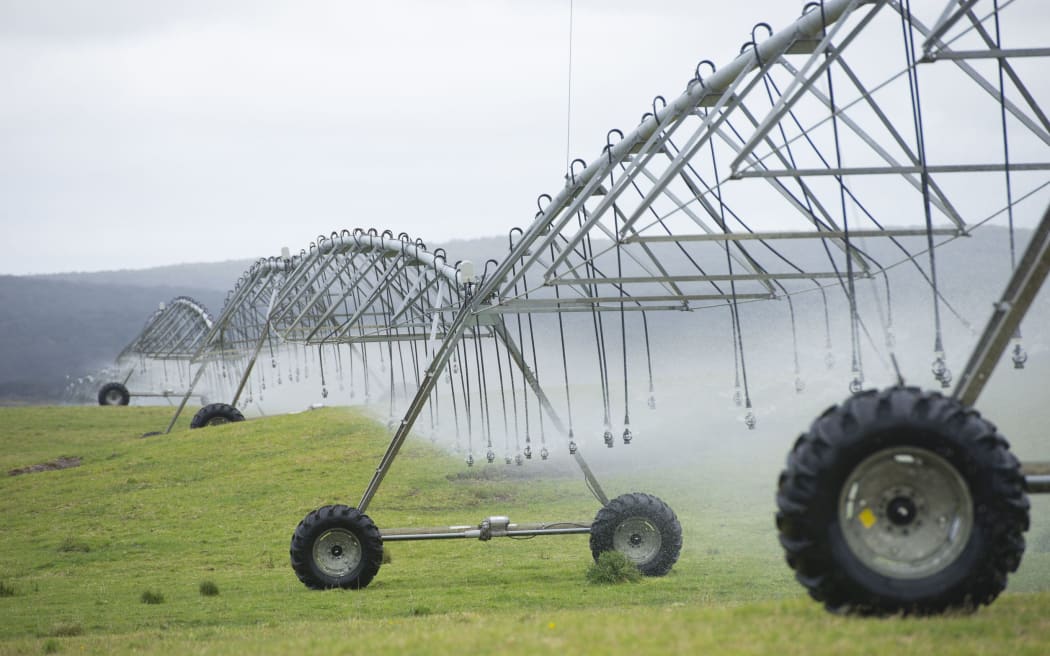Some scientists are challenging claims by supporters of irrigation dams, such as Prime Minister John Key, that the dams are good for the environment.

Photo: 123rf.com
The government has announced $1.6 million in funding from the Irrigation Acceleration Fund for three water storage schemes in Gisborne, Hawke's Bay and Wairarapa.
Mr Key told Morning Report this week that apart from the economic benefits of this investment, it will also have environmental benefits.
But a Waikato vet and ecologist, Dr Alison Dewes, said the government and pro-irrigation groups had ignored evidence that dams were a massive public health risk and a huge threat to the environment.
Dr Dewes is an expert witness on behalf of non-government organisations and iwi at irrigation hearings across the country.
She said the science put forward in favour of irrigation schemes did not add up, and the risk to public health had been sidelined in favour of the dams.
Dr Dewes said the Canterbury District Health board had seen an increase in gastro intestinal issues.
"We need to widen back and say 'what types of bugs are causing this to happen', but also how are these getting from the paddock to the people?" she said.
Dr Dewes said about 40 to 50 percent of irrigation water was for dairying.
"What we have is a lot of one type of animal with certain types of bugs in their faeces that makes their way into the water, and these are things like E Coli, Campylobacter, Salmonella, Cryptosporidium and Giardia.
"Four of five of these are in Ashburton and are at the highest rates in the world in terms of incidences among people.
"The other concern is around nitrogen toxicity, it has been advised by the CDHB (Canterbury District Health Board) that you can't use this water (Ashburton water) to feed young bottle fed babies because it can block the oxygen in the blood and basically suffocate it from the inside out."
Dr Dewes said the nitrogen levels in Ashburton were particularly bad.
"The nitrogen concentration in the groundwater and shallow wells is above the World Health Organization's standard of 11 parts per million. The government and pro lobby groups are proposing that what we do to fix that is we grab alpine water and flush it into the groundwater behind that Hinds catchment and basically dilute the polution. This is called managed aquifer recharge, and the public would have to pay for that."
Not bad for the environment - irrigators
However, Irrigation New Zealand chair Nicky Hislop said irrigation schemes were not bad for the environment and she was not aware of concerns for public health.
"I'm certainly not aware of dams being a public health concern any more than natural lakes and waterways that we've got through New Zealand.
"Nutrient levels are being monitored on many river, lakes and streams throughout New Zealand and regional councils are working really closely with their communities to ensure that water quality in NZ, which by international water standards is actually very good, remains so and many areas actually improve.
"I think there is just a huge focus on dairying, while they certainly have a significant footprint under irrigation, they are not the only type of farm," she said.
Ms Hislop said there was no doubt however that irrigation schemes have contributed to the modification of our environment.
Flushing Flows
One of the strongest environmental arguments used by promoters of irrigation dams is the stored water helps the environment by enabling flushing flows.
The idea of a flushing flow is to release water in large quantities from the dam in summer and flush toxic algae along the river and out to sea.
The Hawke's Bay Regional Council has agree to buy $43 million worth of water over 35 years from its own dam so the water can be used for its flushing flows.
But a freshwater ecologist at Massey University, Dr Mike Joy, said research showed flushing flows did not work.
"In a natural flood you get increases in velocity of water coming down that strips off this algae and washes it out to sea. In a natural situation you have all of the tributories, the whole system, fills up with water and there's lots of power in it.
"If you just release it from a single point along that river when it comes out of a dam, then that energy is very quickly dissipated and has some flushing effect in the immediate vicinity of the dam, but very, very quickly even large amounts of water will lose their energy going down the river when they are not supported by all the tributary flows you would get in a natural event," he said.
Dr Joy said research had shown rivers flushed for five to ten kilometres, depending on the water amount, and then the flow lost its power and there were no environmental benefits.

